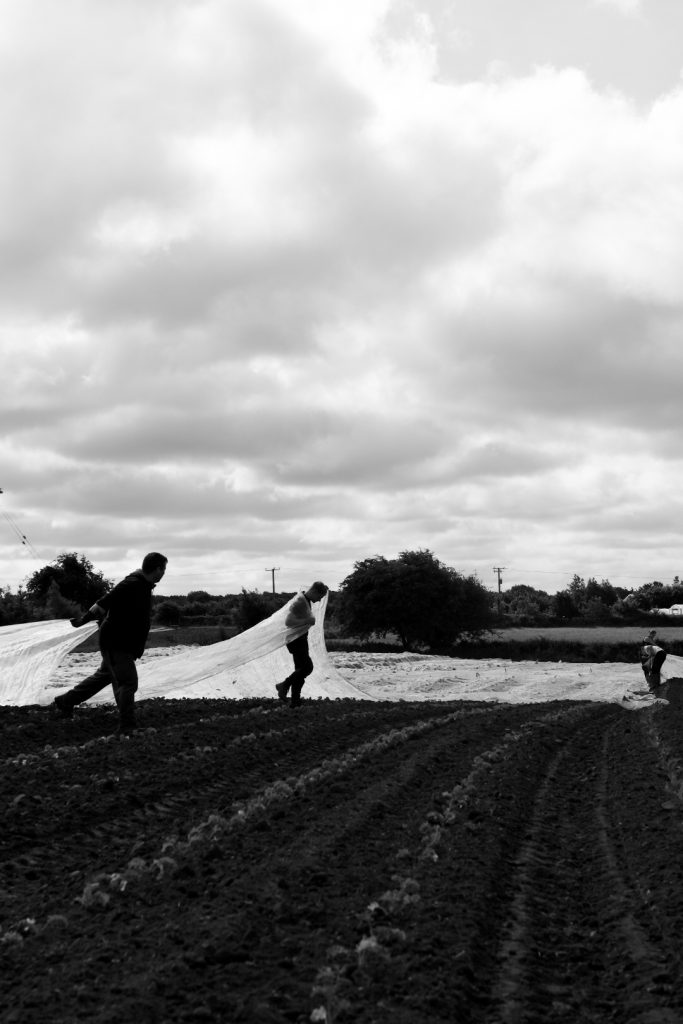In our 18 years of growing food, the last 12 months have presented some of the biggest challenges we have ever faced. We have experienced the most difficult growing period in our history with relentless wet and dark weather.

Our harvest this year has been delayed, and whilst last year at this stage we were harvesting nearly a quarter of a tonne of cherry tomatoes a week, this year we have plenty of fruits on the plants but no red ones, and we are now heading for a month behind schedule. There is little doubt that the changing climate is making it more and more difficult to produce good quality food consistently in the relatively short season we have. Adding to the challenges (and this one was of our own creation) was the launch of our new website IT system that brought us to our knees nearly 3 months ago now. We have worked through most of the issues and the experience you as a customer will have now, compared to three months ago, will be much improved.
If you would like to listen to my little story this week from one of our fields CLICK HERE!
The initial start of the growing season costs on our organic farm: seeds, plants, fertiliser (organic), compost, contractors and labour are high, before you harvest even one bean. All of this is necessary to make the food in the fields happen. All of this can generally keep going once the music doesn’t stop and there is enough money in the pot to pay for all the costs and increases in wages and all the other general business costs we face. In most years our farm spends 6 months accruing debt and the next 6 months paying that debt off through harvest. This harvest although somewhat delayed for certain crops this year begins in July, and this then, becomes our critical month for starting to make some inroads for paying bills and getting our house in order. It should not be a surprise to us that our sales drop in July as everybody takes a much-needed break from routines and goes on holidays (but for some reason we always think this year will be different!). Unfortunately, this coincides with our farm’s and our other Irish farmers bumper harvests too. So, we find ourselves with our harvest rolling in from the fields, with gorgeous kales, cabbage, cucumber and courgettes, salad, lettuce and the first broccoli starting next week from our own farm. Scallions, spinach, fennel (from Enda Hoban), beetroot, and leeks from Beechlawn Organic Farm, ruby chard, parsley and spinach from Millhouse Farm, cucumbers and courgettes from Joe Kelly, the first new season Irish potatoes are arriving from John Larkin this week too and much more. It is a double downturn for us, as our costs go up and our sales go down. Anybody will tell you this is not a good way to run a business. So, as we head into the season, I would ask you to please if you have not restarted ordering with us again if you can at all to please do so. Or if there is any way you could tell a friend, or maybe set up a repeat subscription for the weeks you are here, or order a charity box, or bring your order with you if you are holidaying in Ireland then that would and does make a massive difference.
It keeps us viable; Instead of buying your produce in the supermarket, can you support us instead? It keeps the very best healthiest food on your table. Our team in customer service are on hand to answer all your questions 9am – 3.30pm, 5 days per week and they are more than happy to help in any way they can. So, this is a plea, a plea to ask you to order next week if you can, if you haven’t come back to us yet and you can now it would make a massive difference.
As always thank you for your support. Kenneth PS Check out our IRISH SECTION HERE


















































